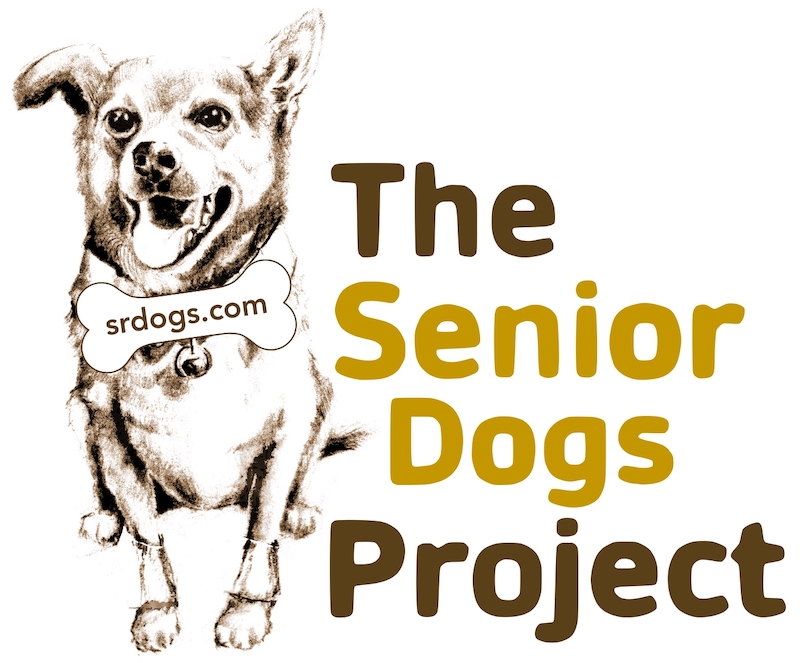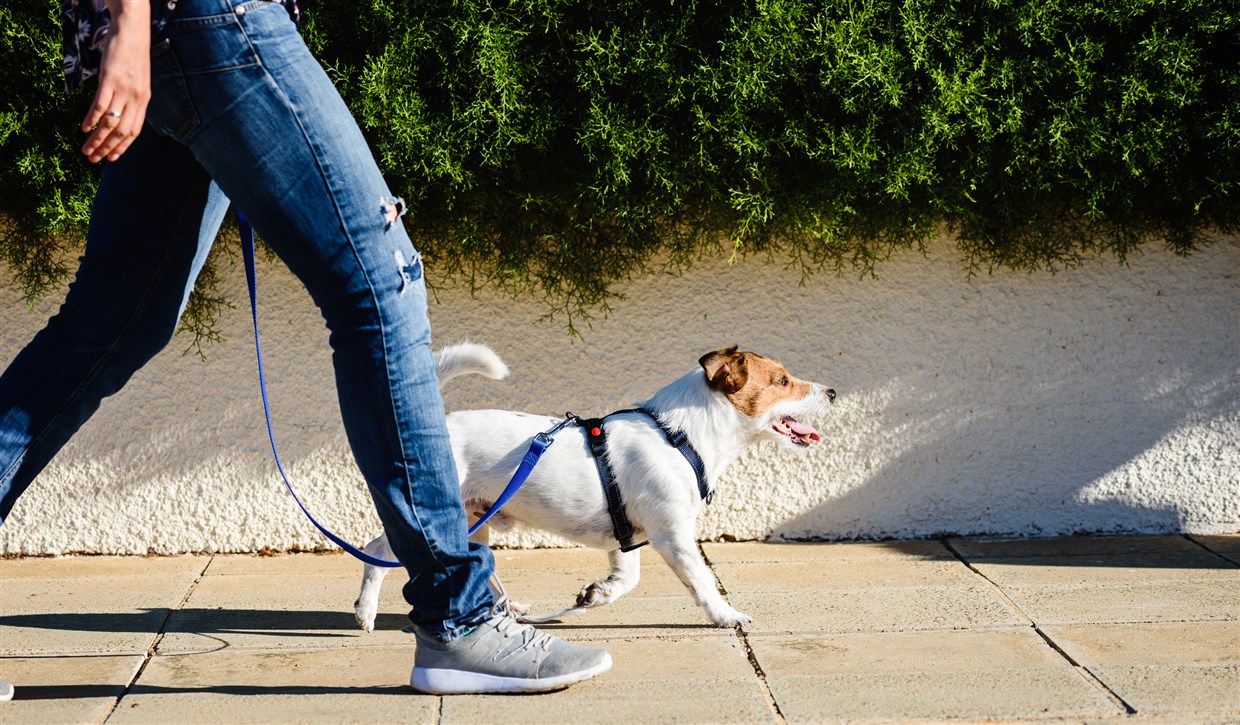STANDING AND MOVING SAFELY
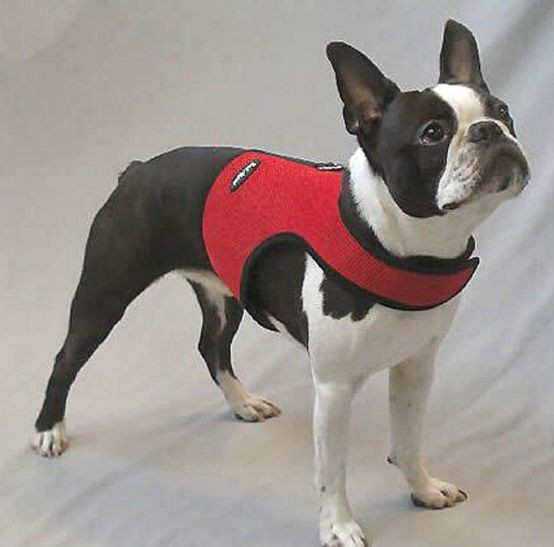
Arthritis and decreasing muscle mass make your senior less stable on her paws. Cover floors with non-slip mats and stairs with a non-slip runner to prevent slipping, sliding, and falling. Some dogs will tolerate wearing non-slip socks or nail attachments designed to prevent slipping. Regular nail trimming to the proper length will also help.
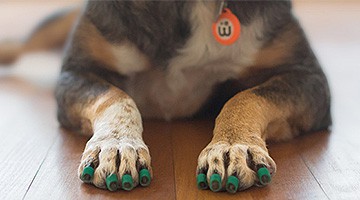
Trim nails regularly and/or use nail attachments to prevent slipping....
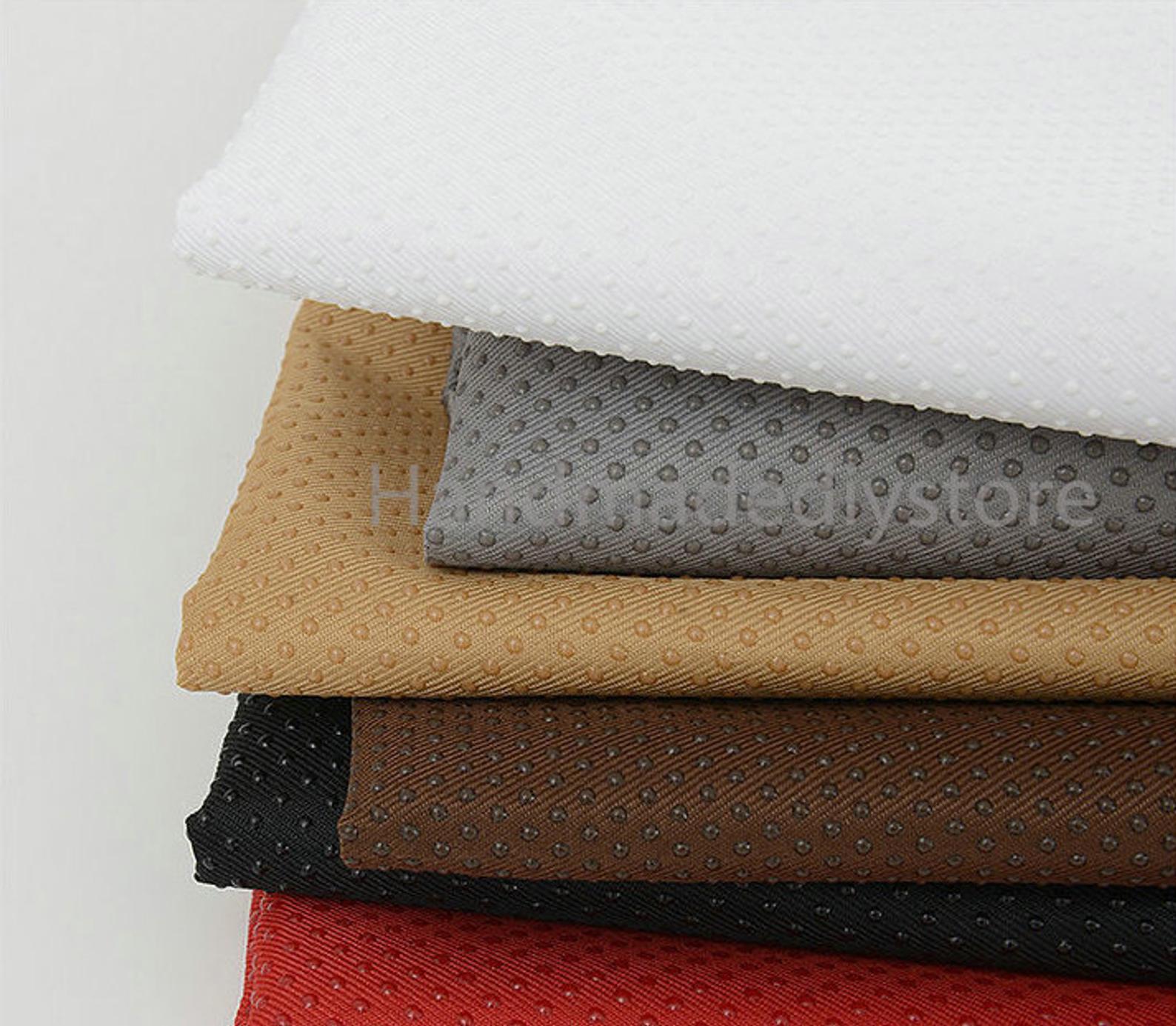
Nonslip mats will prevent slips and falls…..use them wherever slipping hazards exist…..install non-slip runners on stairs and in hallways….
If your senior regularly walks a flight of stairs, use a harness or vest with a sturdy leash attached so that you can assist as needed. You don’t want her to slip and tumble down the stairs, and a vest or harness will help you prevent that — a collar won’t do that safely or effectively. At the Senior Dogs Project, we like to use the kind of vest that has velcro attachments, making it quick and easy to get on and off.
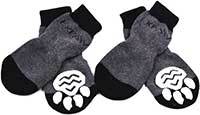
Non-slip socks can help your dog get a grip on slippery surfaces....
COLLAR VS. HARNESS
Can the use of a collar hurt your dog's neck?
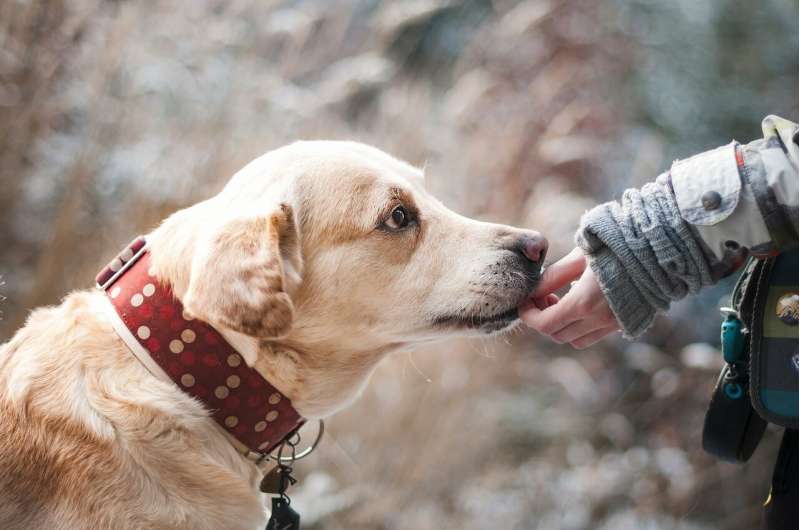
A recent study shows that the use of a collar can, indeed, hurt you dog's neck. More comments on the problems a collar can cause.....
The Senior Dogs Project recommends a harness rather than a collar for all senior dogs.
NO RETRACTABLE LEASHES!!
When it comes to walking a senior, you most definitely do not want to use a retractable leash. Here are some comments on the dangers…..
As soon as you notice diminished sight or hearing or mental confusion, it’s time to take action: if you’ve been using a collar and leash, switch to a harness or vest and non-retractable leash, and, unless you’re in a very controlled environment, hang onto that leash.
WHEN YOU NEED TO ASSIST OR LIFT YOUR SENIOR
I recall the first time I tried to lift "Tux," a 12-year-old, 15-lb. Chihuahua mix we had just adopted. I was aware that he had "back issues," but was not prepared for the curdling scream that came from him. Through trial and error, he and I figured out the best way to support his front and back ends simultaneously so that they kept their alignment and no pain was caused. (We also had x-rays that pinpointed the old spinal injury that was the problem.)

RESOURCES ON LIFTING A DOG
Here are two good resources we found with specific instructions on lifting a dog:
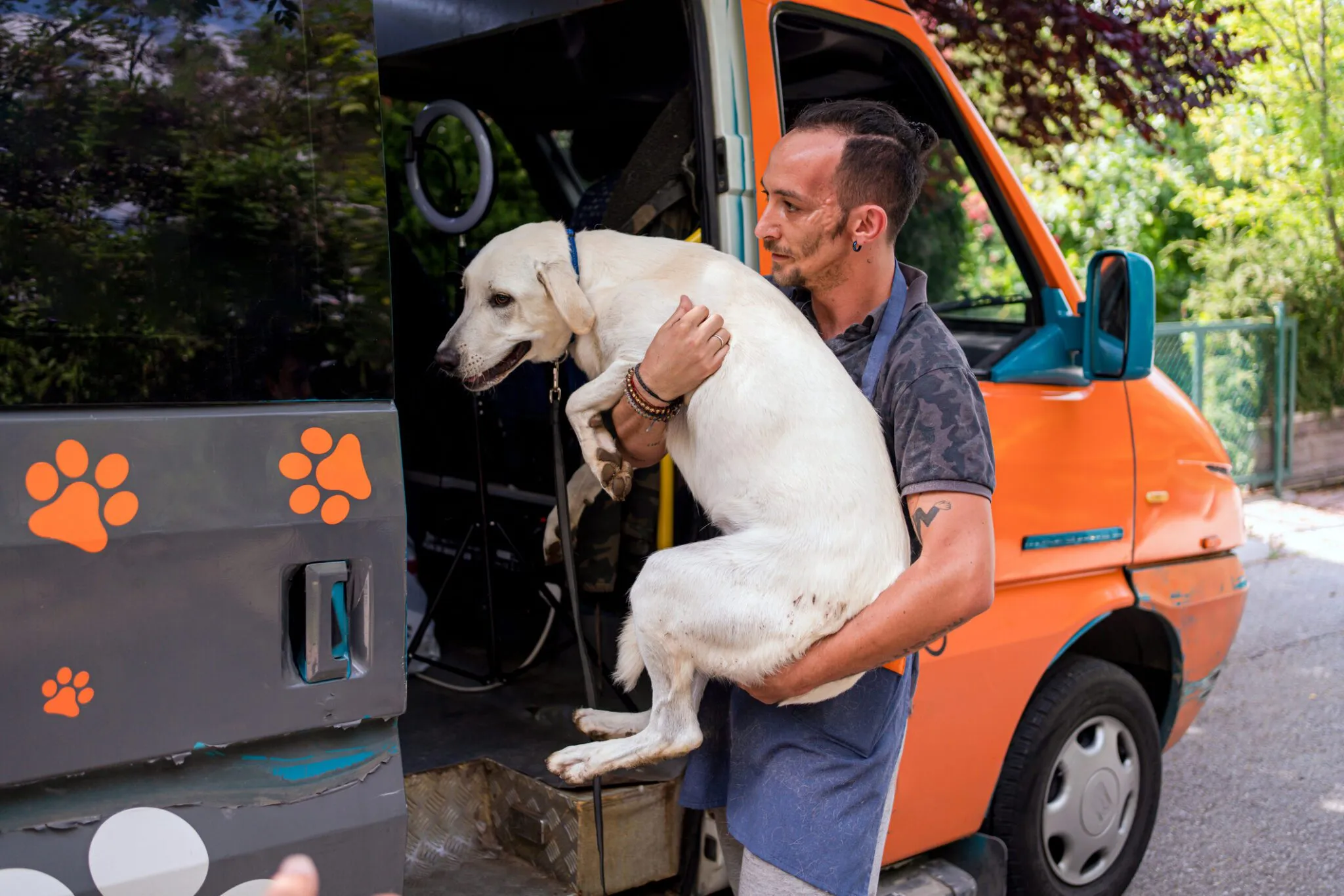
How to Safely Lift and Carry a Dog

How to Safely Pick Up, Hold, and Carry a Dog of Any Size
The bottom line
"All dog owners need to pick up and carry their dogs on occasion, so it’s essential to master techniques that will keep both you and your dog safe. When picking up and carrying your dog, it’s important to use both arms to provide front and back support and to hold your pet close to your chest for added security.
"You may need to tweak your technique depending on your dog’s size and if they have any medical conditions or show pain or discomfort when being handled. Dog carriers can help you transport your pet comfortably over long distances." See the article.
DRINKING AND DINING

Fresh, clean water, free from contaminants, is critical to a dog’s good health. At the Senior Dogs Project we place water bowls right next to food bowls and also at several places around the house where the dogs spend time, making them easily accessible. Arthritis and muscle weakness can make bending over to food and water bowls problematic for your senior.
If you notice that your senior's hind legs shake a little as he tries to get to the proper position for drinking or eating, put nonslip mats both under and around the bowls. Arthritis and decreased muscle mass may be the cause. It also may help to make a very slight adjustment in the height of the bowls. You can use a cardboard box under the bowls that’s just an inch or two high.
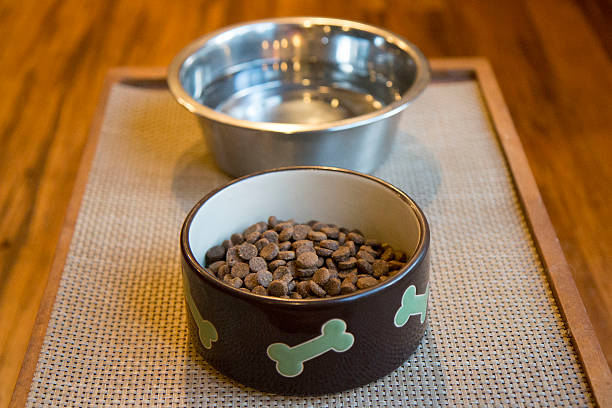
There are also raised bowls commercially available, but these actually can be dangerous to the health of large-breed dogs. A life-threatening condition -- gastric dilation and volvulus (GDV, also known as “bloat” and “turning of the stomach”) -- is thought to be caused by a dog's eating from an elevated bowl. The suspicion is that the dog swallows a great deal of air while eating.
Dog bowls come in many sizes, =different materials, and decorative designs. Here are some guidelines for choosing bowls that are appropriate for your senior….
We wash food bowls in the dishwasher on the hottest setting and scrub water bowls with soap and hot water and refill with fresh water each morning. Biofilm is a real risk, unless you are diligent about washing water bowls thoroughly.
PROTECTION FROM THE ELEMENTS
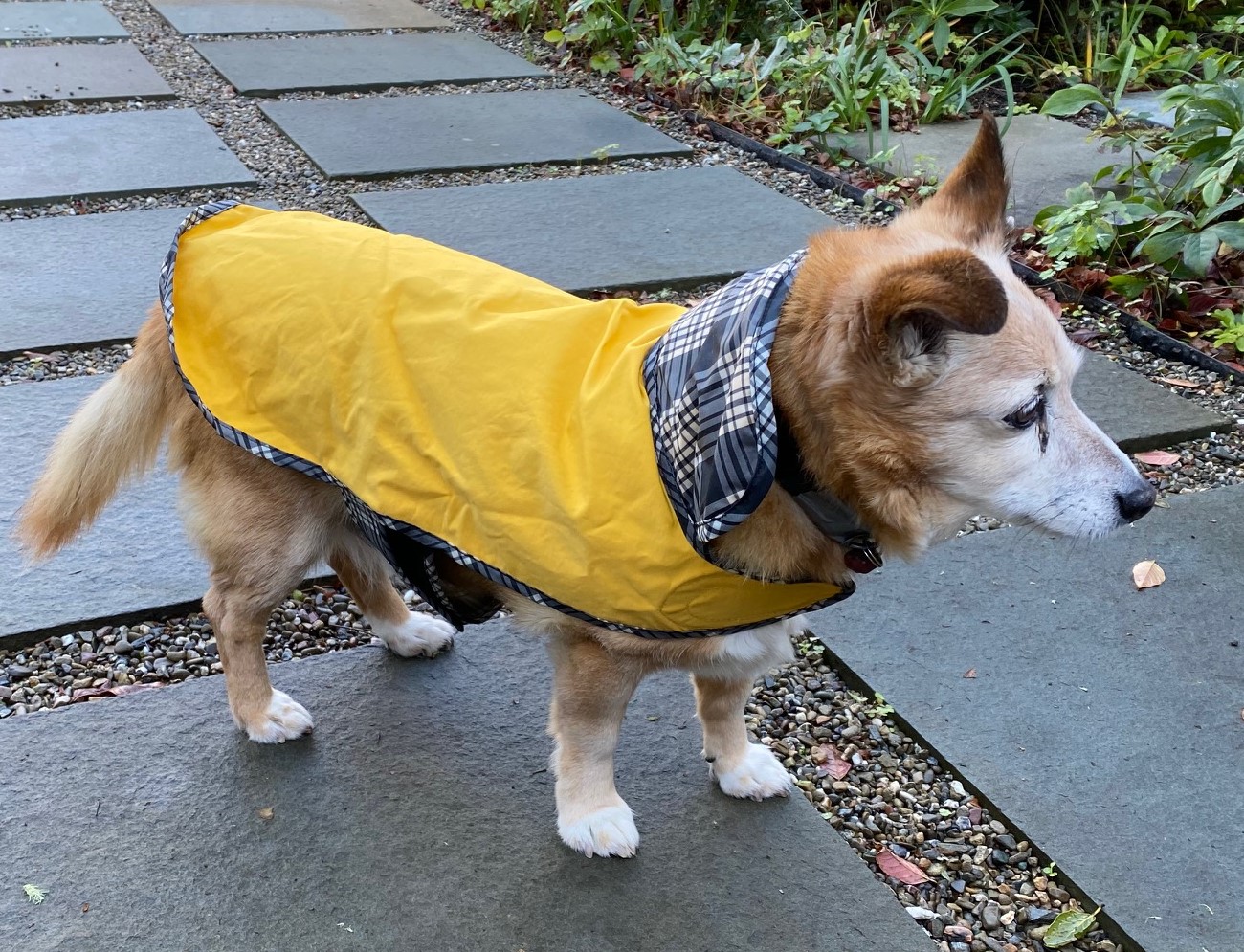
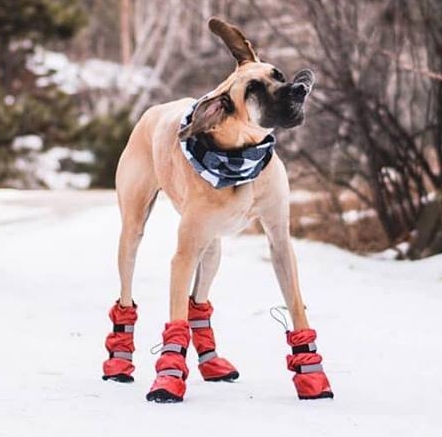
Your older dog will feel the effects of weather. There are so many choices — both practical and fashionable — for protection from rain and cold. And don’t forget boots, if there’s snow or ice on the ground. Salt that is used to thaw ice can be problematic, especially if your dog licks his paws.
You may be a fashionista and want to spoil your dog (and yourself) with the latest in designer dog clothes. Feel free to indulge! However, functional and protective clothing should also be on your shopping list. Here’s a description of some of those items, along with a really funny video of dogs trying on their new boots…….
ADDRESSING WEAR AND TEAR
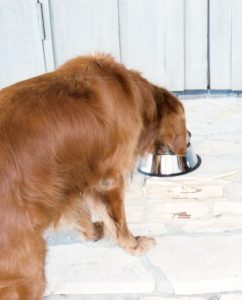
It was clear from the wear and tear on Stynson’s elbows that his former home had not provided cushioned places for him to lie on. We eased his discomfort with plush, non-slip mats and orthopedic beds throughout the house. "Elbow protectors" and "callus cuffs" are also readily available through pet supply sources. And, by the way, the folks who dumped Stynson at the public shelter at the age of 12 (because they were going on a family vacation) should know that they gave up THE BEST DOG EVER.
GETTING PROPER REST
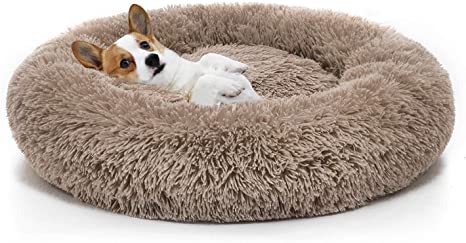
You really do need to indulge your senior dog in the best resting and sleeping environment possible. Every aging body needs good quality rest. There are many choices on the market.
Donut beds with an orthopedic mattress are a favorite of Senior Dogs Project residents, although some of our dogs select different types of beds for different purposes — a donut bed for resting during the day, and a flat, bolstered mattress at night. We also like to provide a bath towel that can be scratched at and fluffed up into the proper arrangement before lying down. Every part of the bed should be completely washable and dryer-safe. If incontinence is an issue, any part of the bed that’s not washable should be covered in a water-proof sleeve.
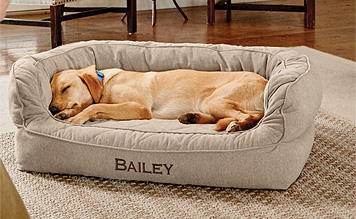
What is an orthopedic dog bed?
According to one source: An orthopedic dog bed is one that provides extra support to a dog’s bones and joints, especially the hips and elbows. … Some orthopedic dog beds are made with memory foam, but a bed can be orthopedic as long as the fill is thick, durable, and provides enough support.
A high-quality orthopedic bed will ensure cushioning for joints and a restful night’s sleep…..Learn how to evaluate them…
GROOMING AND MASSAGE
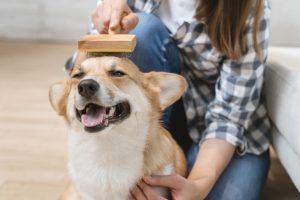
An aging dog needs serious attention to grooming. To prevent slipping, nails need to be trimmed regularly so that they do not touch the floor when the dog is standing. Frequent brushing and, depending on your dog’s coat, regular visits to a professional groomer need to go on your dog’s schedule.
An important part of a grooming routine is running your fingers and hands over all the parts of your dog’s body to check for parasites, lumps, bumps, and swellings. You will need a brush and or a comb, as well. There are many choices of grooming tools. Consult your veterinarian and a professional groomer to get some advice on the best type for your dog.
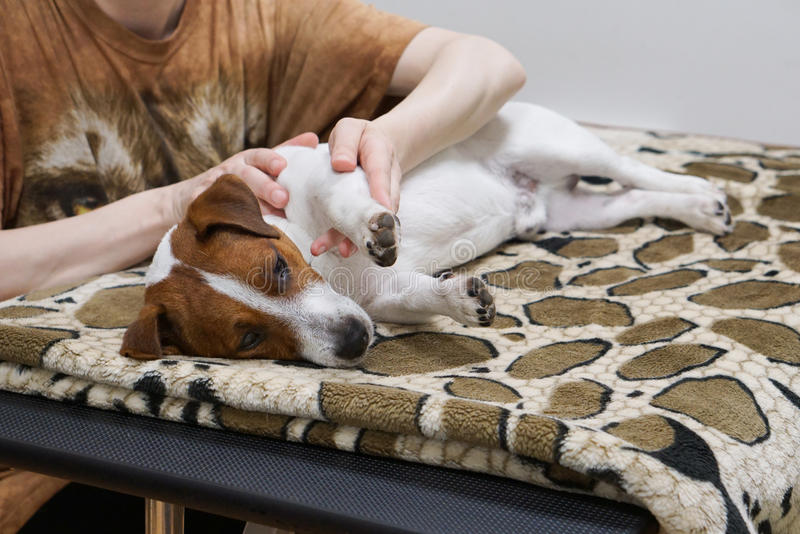
Massaging your dog is good not only for your dog’s relaxation, but for your own, as well. And it’s great for bonding with your dog! Read more about the benefits of canine massage…..
MENTAL STIMULATION
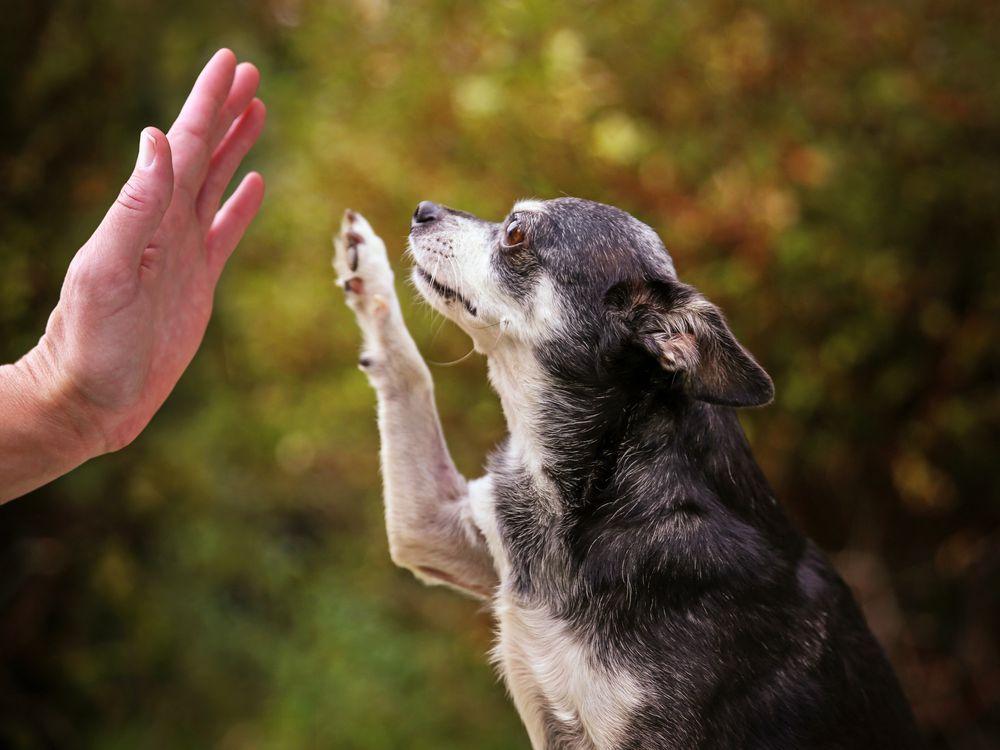
Teaching your senior new tricks is far and away THE BEST way to keep her engaged in life and in her relationship to you and your family.
The more mental stimulation you provide, the more opportunities there are for counteracting the effects of cognitive decline.
Is a dog ever too old to train?
The answer is NO! You can train a dog at any age. You can find out more about the possibilities and joys of training an older dog at the Spirit Dog Training website!
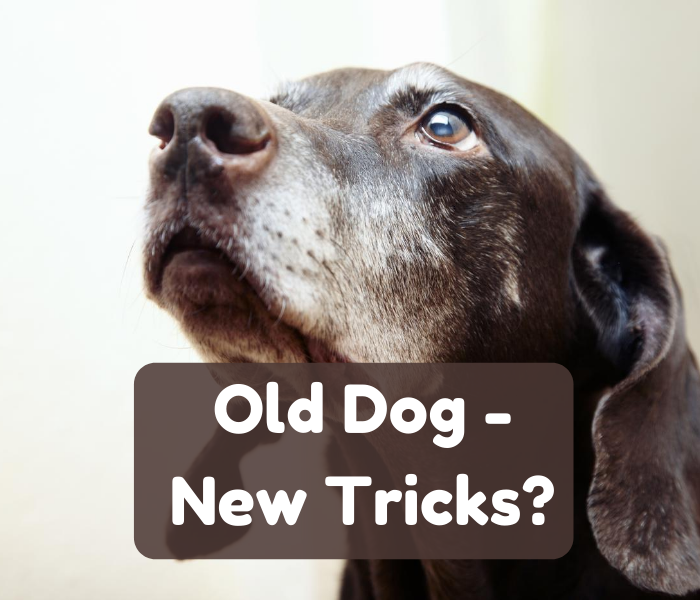
ENGAGEMENT
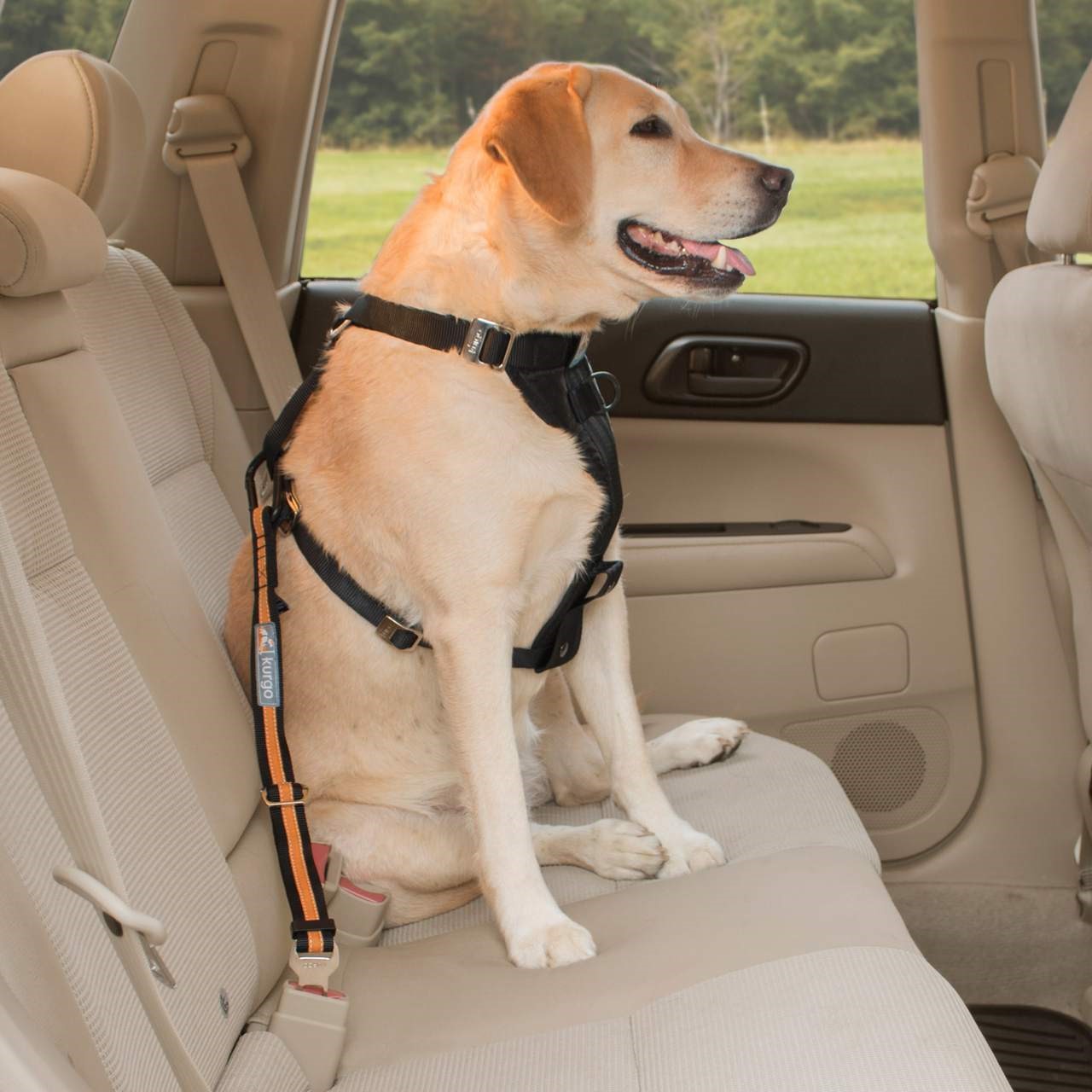
Car Rides!
Keep your senior engaged in life by taking him with you whenever possible, even on a short car ride. One safe way to drive is with the dog in a harness attached to a seat belt. This will keep him from distracting you while you’re driving, and will provide a safe place for him to ride. For longer rides, we’ve noticed that our dogs like a donut bed to lie in. The attachment of the harness to the seatbelt should be long enough to allow your dog to lie down comfortably. If your senior has trouble getting up into your car, there are steps and ramps that will help.
Hiking!
If you’re a hiker, your dog is one of the luckiest dogs in the world. Gear of all kinds exists to make it fun for all. Special backpacks that distribute weight properly and are comfortable for you to wear will provide an alternative, should your dog become tired and need to be carried.
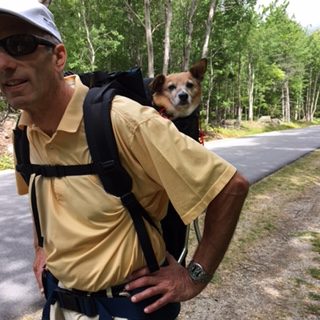
Great information on hiking with your dog at the American Hiking Society site…
Walks!
If you’re not into hiking or your senior isn’t up to it, there’s nothing wrong with simply walking. And there are lots of choices when your pup tires — slings that go over your shoulder or pet strollers.
We always like to have water available on hikes or walks, and have found a very useful combination container-and-dispenser that we always take along.
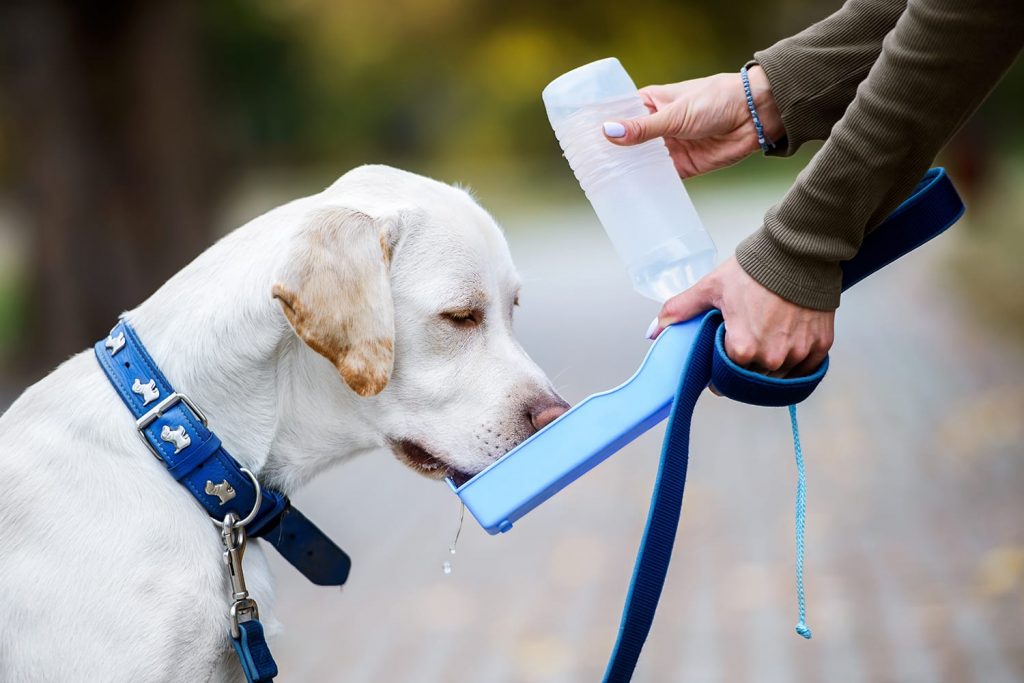
Swimming!
Senior dogs can continue to swim, although not in very cold or rough water. Every senior Golden we adopted loved swimming, and all were able to enjoy the water throughout their lives with us. We took them to a bay, a lake or a calm river.

Travel!
No reason to leave your senior at home when you travel. The Bring Fido site will help you find a dog-friendly place to stay.
And here are some tips about good practices when you stay at a hotel with your dog.
You can also read about our cross-country trip with Misty!
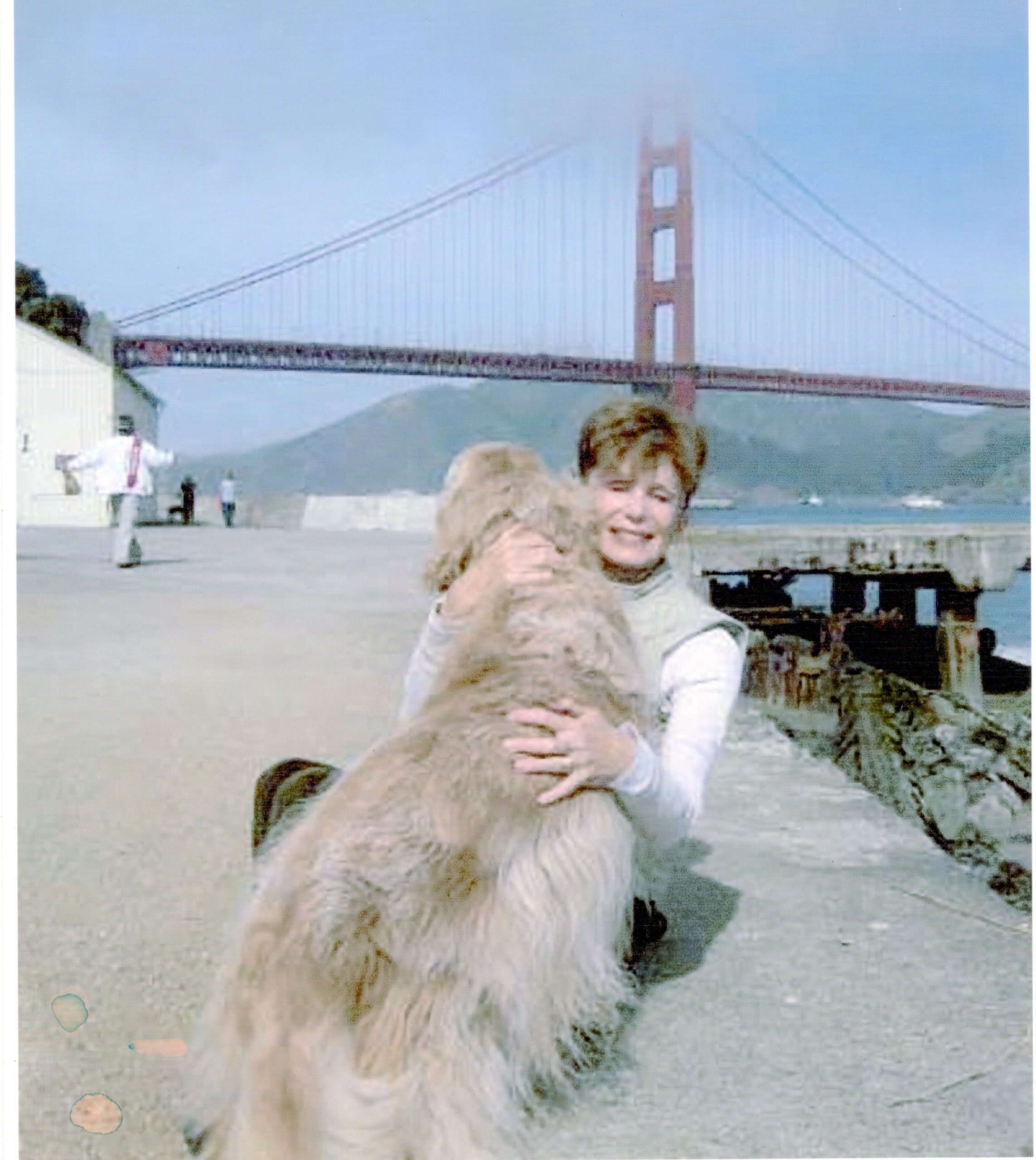
A New Way to Fly with Your Dog!! -- Bark Air

May 24, 2024 The new company says, "We are launching BARK Air because, despite incredible demand from dog people, there is simply no good or convenient solution to traveling long distances with your dog. We recognize and believe that life is better – for you and for your dog – when you are together. We have spent years talking to airlines about how to make flying with your dog more accessible, and because of their resistance, we decided to build the solution ourselves."
